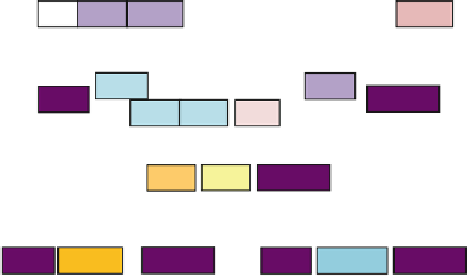Biology Reference
In-Depth Information
3
Methods
3.1 Third-Generation
HIV-1-Based Lentiviral
Vectors
Over the years, the biosafety of LVs has been greatly improved.
The third generation of self-inactivating (SIN) LVs is currently in
use ([
49
,
50
];
see
Chap.
2
on lentiviral vectors). We use tat-
dependent, SIN LVs split into four plasmids [
51
]. This system
contains a deletion in the U3 region of the LTR (Fig.
2
) to reduce
the risks of recombination and of the formation of replicative LVs
and to decrease interference between the LTR enhancer and the
internal promoter driving transgene expression.
3.2 Pseudotyping
with Various
Envelopes
The fi rst option for modifying the tropism of LVs is to exchange
the envelope glycoprotein (Env), a process known as “pseudotyp-
ing” (Fig.
1
). By replacing the original Env protein with other viral
glycoproteins, the host range of the vector can be altered and its
transduction effi ciency in specifi c cell types increased. Glycoproteins
homologous to the VSV-G protein have been proposed for CNS
applications. Various G proteins from the rabies (RV-G) and
5'-LTR
3'-LTR
U3
R
U5
psi
RRE
cPPT
PGK
Transgene
WPRE
miRT
R
U5
Transfer plasmid
Δ
U3
GAG
RRE
Packaging plasmid
CMV
poly A+
PRO
POL
TAT
REV
poly A+
RSV
REV
viral protein plasmid
Envelope plasmid
CMV
VSV-G
poly A+
or
CMV
MOK-G
poly A+
293T
Fig. 2
Schematic diagram of the third-generation packaging system. Four plasmids encode the genetic materi-
als of the lentiviral vector (1) the transfer plasmid contains the transgene of interest; (2) the packaging plasmid
contains the protein capsid, protease, integrase, and reverse transcriptase; (3) a plasmid expressing the rev
protein; and (4) the envelope plasmid expressing the VSV or MOK glycoprotein. Cotransfected cells produce
lentiviral vectors with a genome consisting exclusively of the sequences present in the transfer plasmid









Search WWH ::

Custom Search